|
Sometimes you just want to go over the top! This sacque gown (robe à la française) is without doubt the most opulent gown of its type I've made yet, inspired by a small number of extant gowns of the 1750-70 period made of beautiful brocade textiles with applied silver trim and lace. My challenge was to create a gown that represented the luxury of the era in upper class dress, while still maintaining the balance, grace, and elegance of mid-18th century dress. As often happens, this project was sparked by a fortuitous discovery of a luxurious silk blend brocade at a price that, while expensive, wasn't shockingly high. This lovely fabric, with soft metallic gold motifs woven throughout, on a golden tan ground, and little sprinkled motifs in rose-red, was rich looking without being garish -- a perfect background for metallic silver laces and trim. Please read on to follow my journey of creating this unique gown!
0 Comments
I admit, I'm crazy about sacques! For this second iteration of my design for a ca. 1755 "grand habit" (formal evening gown, in the "robe à la française" or French style) I decided to use a glorious iridescent silk taffeta with a golden ecru ground and variable soft turquoise-teal stripes. The colours are truly luscious!
(Click on "Read More", below right, to continue) It's hard not to love the graceful beauty of the 18th century robe à la française (often called in English a "sacque" or "sack" gown), with its elegant lines and ability to flatter practically any woman of any age and shape. It's no wonder this style remained in fashion, with a number of variations, for nearly five decades of the 18th century, from the late 1730's to the late 1770's. For this project, I wanted a silk robe à la française in a more formal style (what in 18th century France might have been termed a "grand habit"), something appropriate for evening wear in an upper class setting: a dinner or evening soirée at a château!
One question that comes up frequently in online historical costuming discussions is that of how much fabric would be needed to cut a particular type of gown, or else how best to make use of available yardage. This was certainly a serious question in the 18th century, when the high cost of materials (particularly silk) meant that an effort was made to use every possible scrap of fabric to best advantage in constructing a gown. This is revealed in the many ways in which garments -- particularly silk ones -- were cleverly pieced. In this article I'd like to focus on the problem of estimating yardage for a typical robe à la française (known in English as a "sacque" or "sack" gown. (Click on "Read More", lower right, to continue)
While enjoying the fresh cherries picked from our own tree today, it occurred to me that cherry red is one colour which seems to permeate fashion images throughout the centuries. It is one of those hues that requires panache to wear, and a certain level of self-assurance, perhaps even courage. Yet it's been embraced by every era I can think of, and is always ready to make a statement about its wearer, whether as an entire gown or costume, or accessory. The men haven't been left out either!
This has been such a devastatingly sad and bizarre year, hasn't it? The pandemic we'd hoped would never happen has profoundly changed lives around the world, and left so many dead. As a creative person, keeping inspired and motivated during this moving horror has been a challenge, as I'm sure it has for so many. Yet it's been that ability to turn to creative work that has helped me, and I hope others, maintain our sanity and sense of fun. Nonetheless, what's been going on all around us can't help but have an effect. During this past year, I've found myself ignoring projects I should be working on, procrastinating over others, having difficulty applying myself consistently on many, but then suddenly diving into a flurry of activity on tangential things. This is what seems to have happened lately; I found myself drawn to complete two ca. 1770-75 gowns, both from the same pattern I devised, both in cotton (which I rarely work with), and both almost entirely hand-sewn. Both were in a sense rather pointless projects, since I doubt I'll be going anywhere in them anytime soon, but both gave me joy to make. Binge-watching old Star Trek episodes on Netflix provided hours of silly entertainment in the late evenings while I stitched away on one gown, then the next. I almost began a third (and fourth!) gown -- had all the fabric laid out and yardage planned -- before I stopped myself and realized I should probably try to get back to focusing on pattern-drafting! A nasty kitchen mishap in March had left me with a partly numb forefinger on my right hand, which was a good way to avoid pattern drafting -- until now. I have most of my control of that finger back, so it's time to return to my "real" work. So here are some photos of the two recently finished cotton gowns, along with a video just for fun! By the way, over the next few weeks I'll be finishing work on the pattern for this 1770-75 gown design, along with a somewhat different ca.1760-65 gown (see my blog post on the "Countess Howe" pink gown). Both designs will be included in one pattern, along with several accessories. I'll be sure to announce here once the pattern is available! (Click on "Read More" below, to continue)
In the Pink!
As of the date I write this (September 9, 2020), the project is nearing completion! I'm beginning to be able to see the final result. Best of all, despite definitely not being a pink person (I can't think of a single pink garment in my closet of "modern" clothes), I have to say that the colour of this beautiful iridescent silk has grown on me. Its tone shifts with indoor or outdoor lighting (more lavender with the latter), and the pleats and ruffles create little pools of reflection in the shot silk, which has a white coloured warp and bright pink weft. The camera unfortunately fails miserably at capturing the scintillating nature and luscious colour of this silk. (Click on "Read More", below right, to continue...) In this next installment of the project to re-create the ensemble in Gainsborough's beautiful painting of Countess Howe, all the undergarments are now completed, and Marguerite (the mannequin) is dressed, ready to be fitted out further. But first, for reference, here is another copy of Gainsborough's magnificent portrait of Lady Mary Howe, which I've digitally cropped in order to focus on the garments: And here is Marguerite in her underthings:
(Click on "Read More" at right below, to continue...) "One thing is new, which is, there is not such a thing as a decent old woman left, everybody curls their hair, shews their necks, and wears pink..." [from The Cut of Women's Clothes by Norah Waugh, quote attributed to Lady Jane Cole, 1754]. In this current time of pandemic, I've found it's been difficult to focus as consistently and effectively on creative projects as I usually do. In fact, it's been hard to just get started -- on anything. I think it's taken weeks to adjust psychologically to a reality few of us could have imagined. Yet now I feel that concentrating on a new project, even if it means a little mental pushing and shoving, is a good thing.
Not that I needed yet another thing to add to my seemingly limitless "to-do" list, but maybe something exciting enough to jump-start the Muse. What I really needed was inspiration to launch; that impetus came partly from an incidental chat with an online friend, and partly from the rediscovery of a long forgotten length of silk taffeta that I'd stuffed in the back of a cupboard years ago. Although a project like this may be rightly judged a bit self-indulgent, it is also a means of elevating the spirit and alleviating some of the stress and melancholy of the present time. Sometimes going on a journey is the best medicine for ennui, and in this case it's a journey back in time to re-create a lovely 18th century gown. (Click on "Read More", below right, to continue) January 20, 2020... It's taken me a few months to get to back to this blog subject, but one of my New Year's resolutions was to try to complete as much of my planned but unfinished work from 2019 (and previous years) as possible. So here, finally, are some details of this 2019 project, from inception to finished ensemble. I think it was the fortuitous find of an almost-matching modern silk taffeta which prompted me to get this ensemble made at last, but it had been in my creative consciousness for some time. In 2019 I decided to just get on with it! Background Notes to Making the Replica: The gown and petticoat are modeled as precisely as I could after an extant ca. 1750 to 1755 robe à la française (usually referred to in English at the time as a "sacque" or "sack" gown or dress) which was offered at a private sale a number of years ago (you may recognize the photos of the original). The notes below give an overview of the project, and following these are details of the steps I took to complete the ensemble. There were some intriguing features of the extant gown that drew me to it, aside from the striking use of the striped textile: (a) First, and most noticeable were the exaggerated but beautifully decorated cuffs (see photo). This style was referred to at the time as "manche à la raquette" (racquet-like sleeve) for obvious reasons, but was a very fleeting fashion. The gown itself was transitional, just on the cusp between the more severe and simple modes of the two previous decades, and the explosion of ornamentation that followed in the 1760's and 1770's. The fact that the owner of this gown chose a sleeve type that was about to go completely out of style (in fact already a little "démodé"), is interesting in itself. I toyed with the idea of making the more fashionable (by 1755) flounced cuffs for the sleeves, but in the end decided I'd replicate the gown exactly as it was, fashion warts and all.
(Click on "Read More" at right to see the rest of this article) |
AuthorPatricia Preston ('The Fashion Archaeologist'), Linguist, historian, translator, pattern-maker, former museum professional, and lover of all things costume history. Categories
All
Timeline
March 2024
|


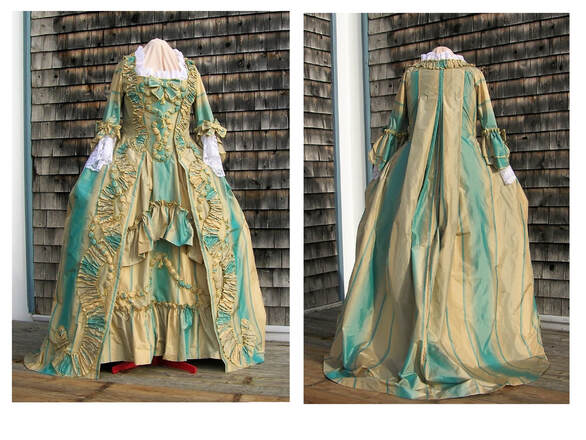
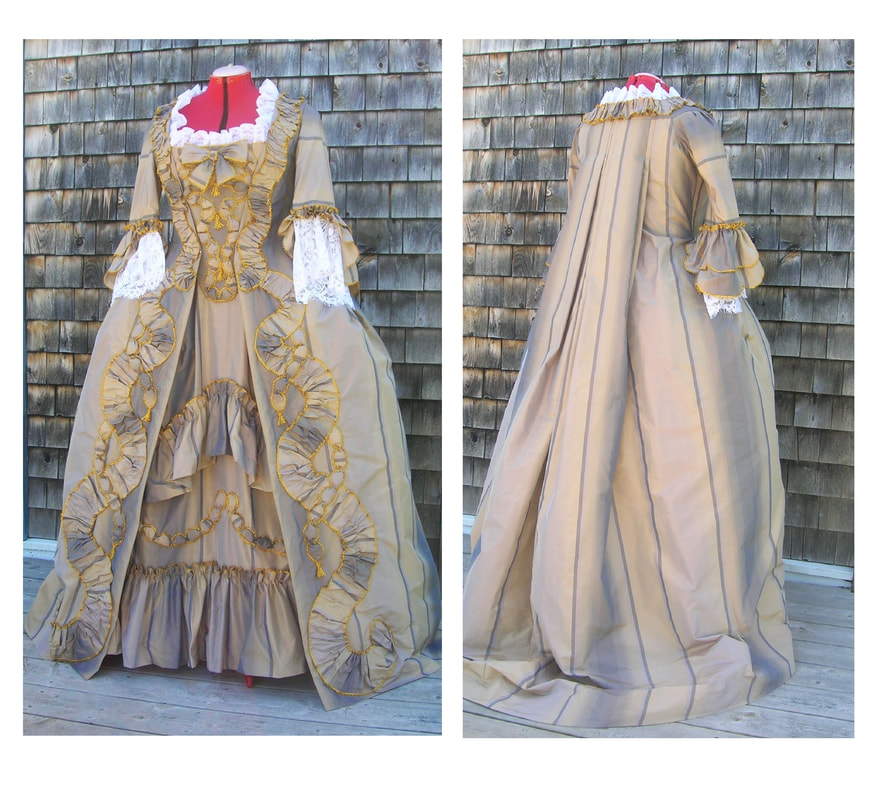
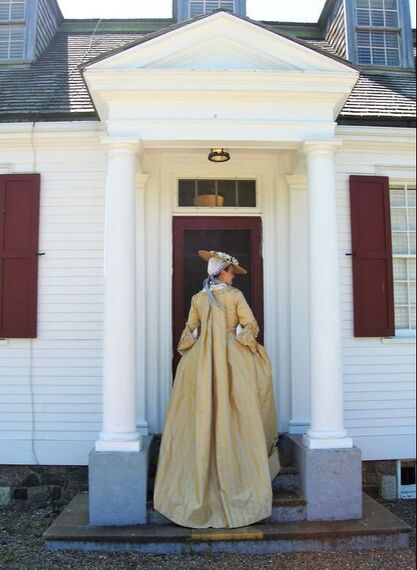

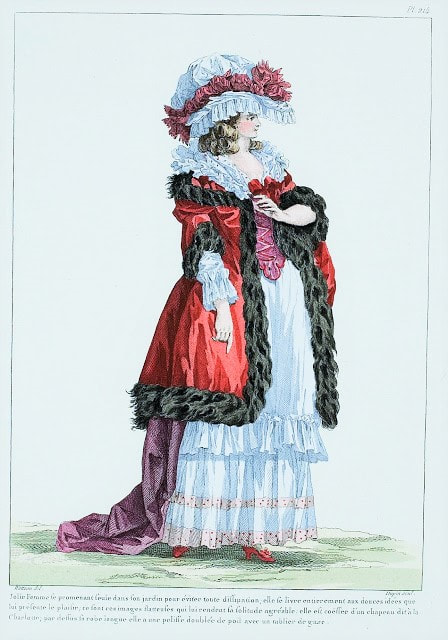






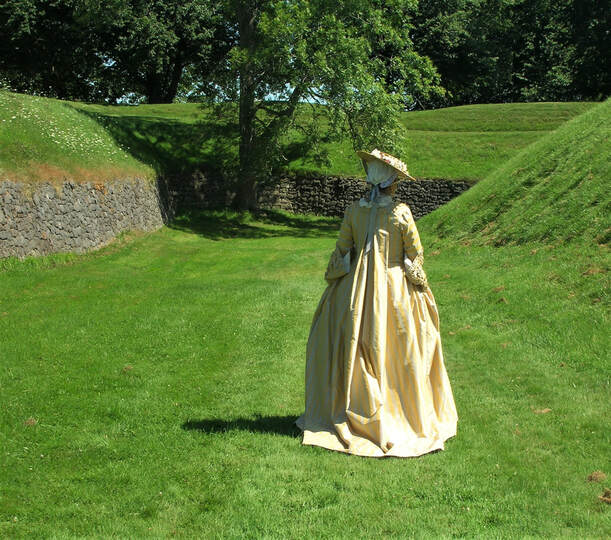
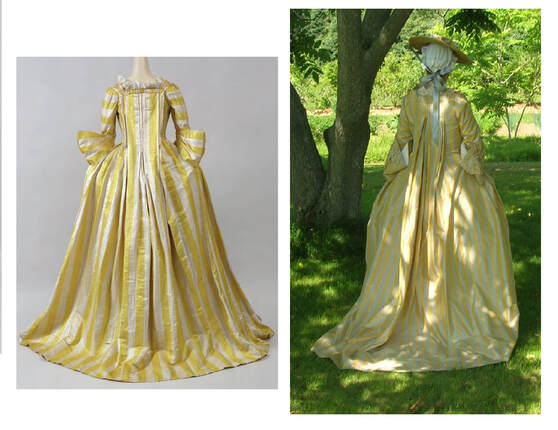
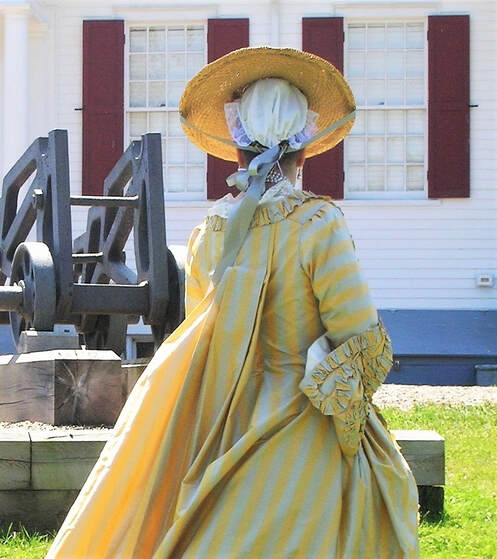
 RSS Feed
RSS Feed